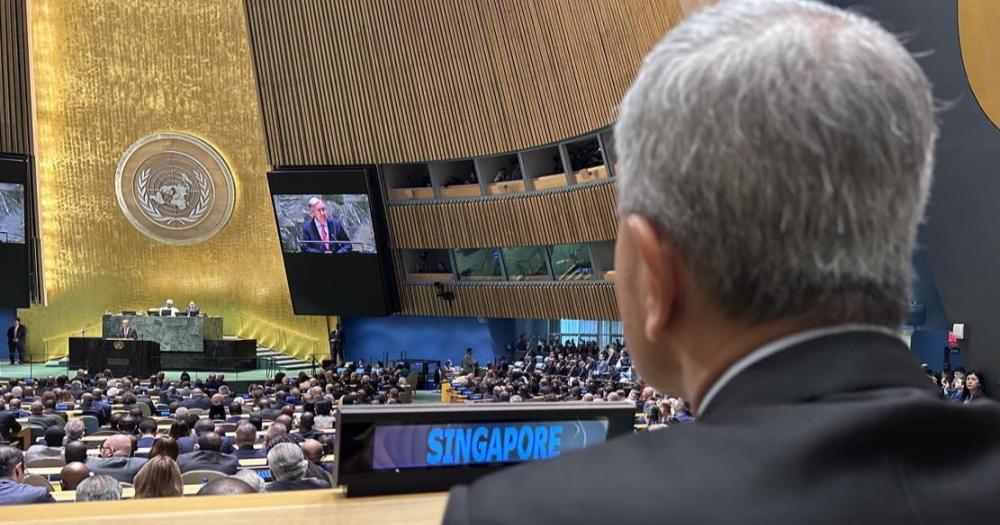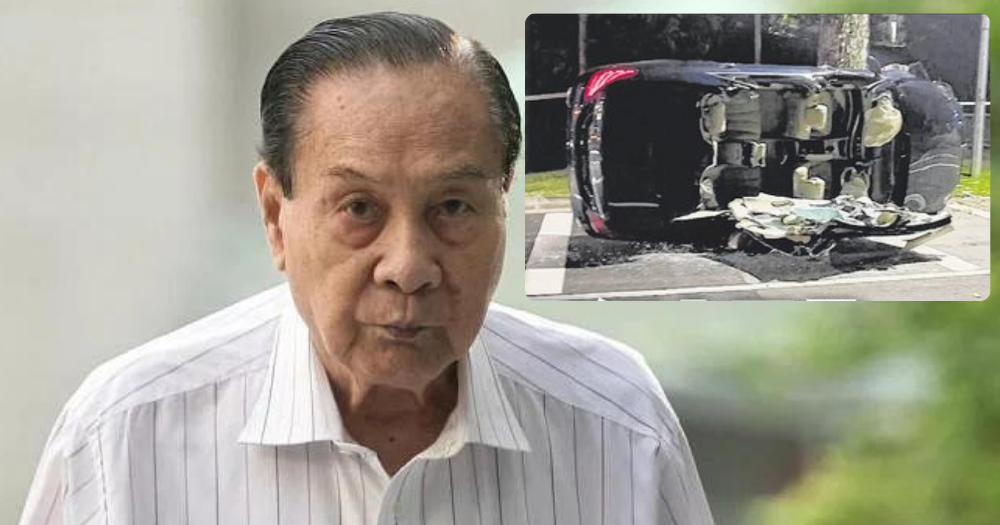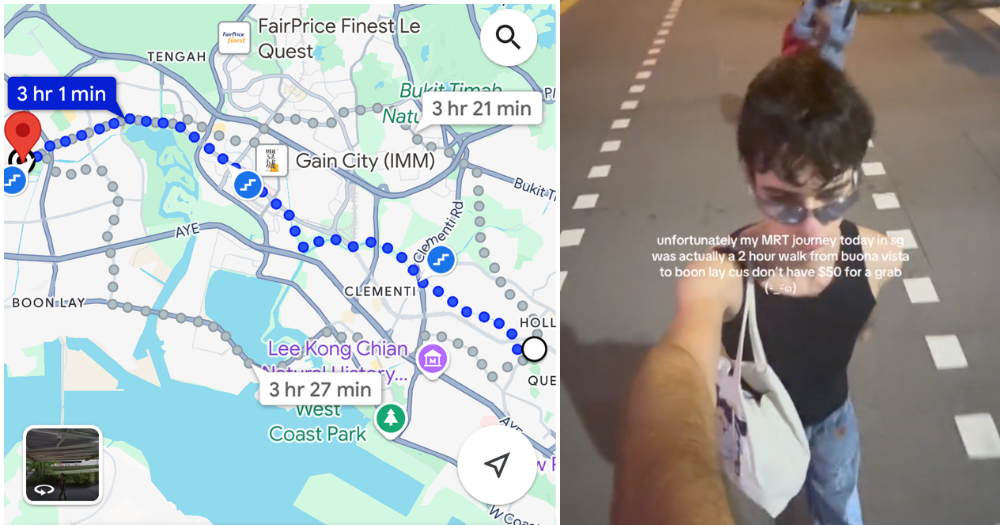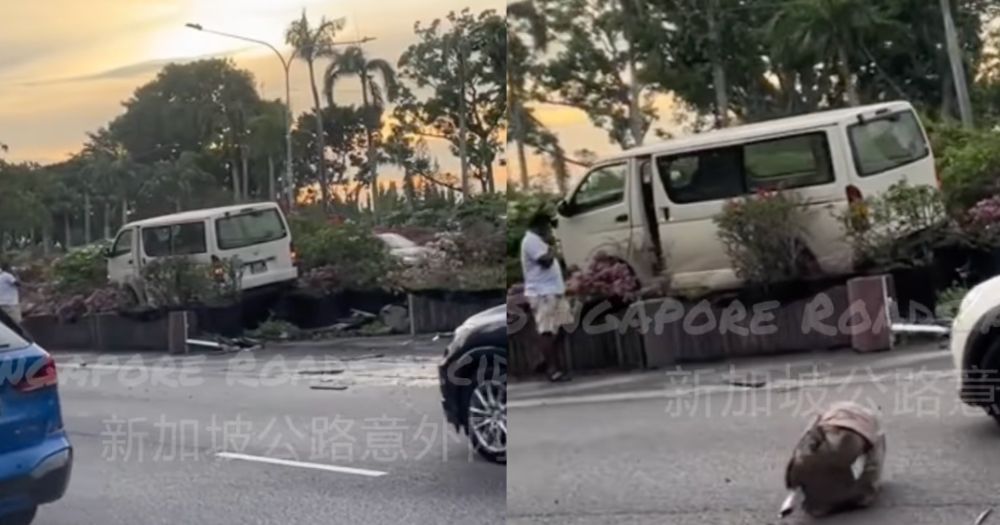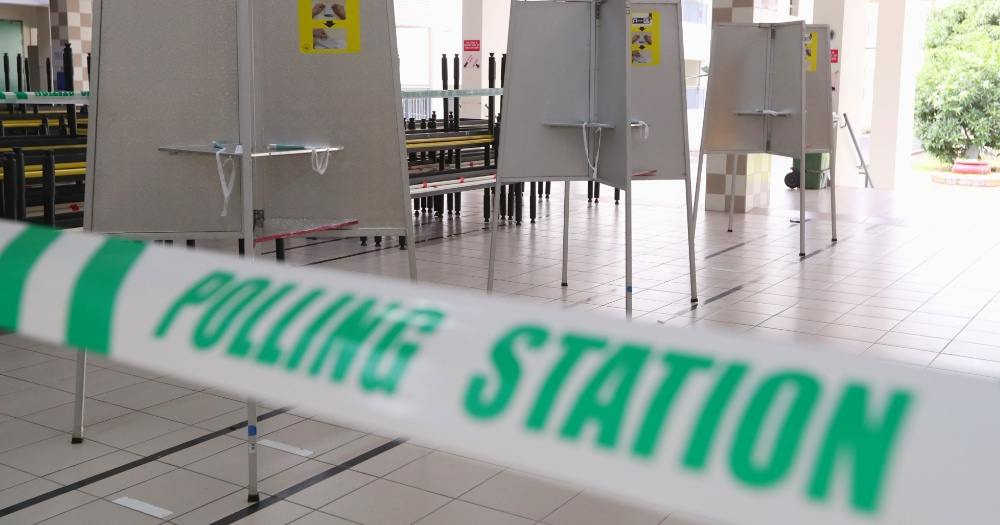Ho Ching didn't want to be Temasek CEO when 1st asked to do so
"I was ready for an early retirement and a different cadence of life," Ho said.
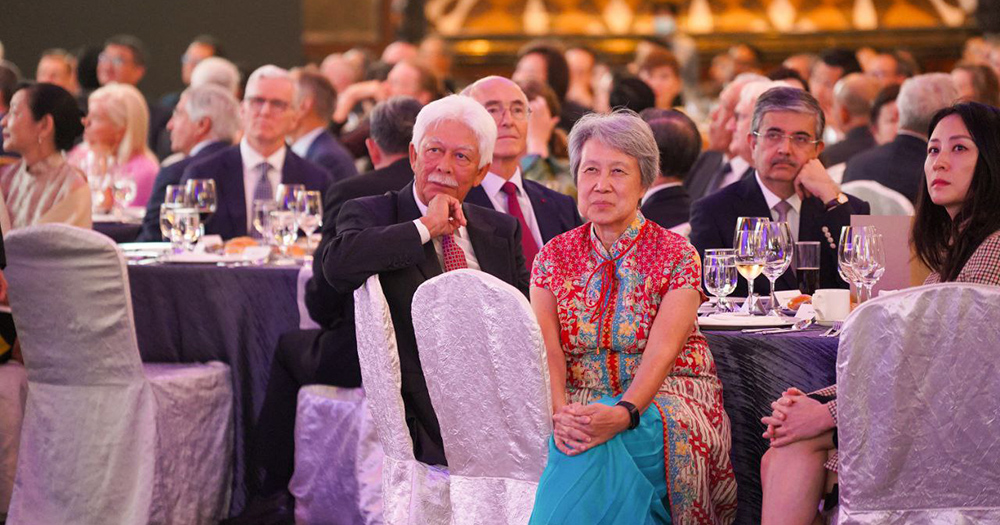
By Generations, For Generations; Fifty Years Of Temasek As Told By The People Who Shaped It is a book about Temasek's growth and development as a global investment company from a Singapore holding company.
Published by Temasek as part of its 50th anniversary, the book charts the history of the company's evolution and the various milestones it achieved, along with the challenges it faced.
Here, we reproduce the prologue written by Ho Ching, the chief executive officer of Temasek Holdings from 2004 to 2021. She became chairman of Temasek Trust in 2022.
Ho talks about how she joined Temasek, the changes during her tenure, and the company's decision to focus on Asia in the first decade of the 21st century.
By Ho Ching
It was the turn of the millennium. The Y2K threat had receded, unnoticed. As CEO of Singapore Technologies, I had been reviewing a list of potential CEO successors annually with the board.
When Peter Seah became available, it was an opportunity not to be missed.
No stranger to Singapore Technologies, Peter would bring a wealth of experience.
Various difficult decisions had already been set in motion, including some sticky personnel challenges. This would give Peter a good start, with a clean, strong and unencumbered hand. I was ready for an early retirement and a different cadence of life.
Then, I got a call from Mr S Dhanabalan, then Temasek Chairman.
Dhana wanted me to join Temasek as CEO. I demurred. I had had a good run, and considerable fun, since my start as a newly minted defence engineer in the Ministry of Defence (MINDEF) in 1976, before moving to the defence industries as Director of Engineering in 1987.
By the early 1990s, I had pivoted to head the newly formed Singapore Technologies Ventures or STV, shepherding an eclectic collection of start-ups.
All were loss-making. My plea to include at least one profitable unit fell on deaf ears. Tough, but what to do? Concerned colleagues had earnestly dissuaded me: STV was a suicide mission, with added political repercussions if I were to fail.
STV was a tough turnaround. Singapore Technologies later was another transformation at scale. Thank goodness for all the mothers who step in selflessly to help their working daughters mind their kids and supervise the household.
So, I was intent on taking life easy when Dhana’s call came. Eventually, I compromised – I would join as an executive director, but not as CEO. Quek Poh Huat, former President of Singapore Aerospace, would continue as head of Temasek.
It was a happy arrangement. I was free to focus my energies selectively.
More importantly, I had time to get to know Temasek, its people and its roots.
And so began a new and exciting chapter for me, and possibly for Temasek too!
Roots of Temasek
When Poh Huat first went over from Singapore Aerospace to head Temasek in the 1990s, he was hit by withdrawal syndrome – no emails on the go.
Dutiful office peons were still going from desk to desk, twice a day, delivering and collecting paper folder files. Temasek’s parent ministry had long been computerised under the old National Computer Board initiative. But Temasek was a small outfit, with its spark of ambition breaking out occasionally.
By 2002, Poh Huat had already built some heft in the management team, hiring some senior professionals with investment advisory experience, including in the groundbreaking public offering of Singtel shares.
Unlike the derring-do of Singapore Technologies with its “why not, why not, why not” culture, the first impression of Temasek was that of a somewhat staid organisation peppered with little silos.
However, Temasek held an impressive portfolio of storied companies. The likes of Singapore Airlines, Keppel, Sembawang and DBS rang the founding bells of economic history in Singapore. They recall the early years of hard scrabbling for Singapore’s survival and transformation from Third World to First.
There was also a later batch of hefty assets – Singtel, PSA and Singapore Power were newly corporatised government entities, divested to Temasek during the 1990s. The government had wanted to open up the market for basic services to spur better efficiency and lower cost.
The corporatisation and divestment of backbone services like port, telco and power in the 1990s echoed the earlier 1974 creation of Temasek that freed the Ministry of Finance (MOF) from commercial shareholder duties.
Without the S$354 million mixed bag of assets endowed to Temasek, MOF could focus on its core mission of policymaking for the economy as a whole. Temasek was a mystery to most Singaporeans, despite the fanfare and news during its first decade.
Yet, investment bankers could come to me with their construct of Temasek’s portfolio – even 100 per cent Temasek-owned companies like PSA had issued bonds with transparent financials. I laughed and told these bankers they had got it about 95 per cent accurate.
So Temasek was not really a secret, despite its public image and reputation. The little silos of Temasek, however, were not just figurative. They were real.
Our offices in Treasury Building had cantilevered circular floor plates that could not take the load of filing cabinets at their periphery. To go from one department to another, we sometimes had to take the lift to the ground floor to change to another set of lifts, just to reach an office three floors away.
Yet, there was something charming beyond the stately Temasek name logo twinkling in gold at the main reception entrance. I dug up and read old board papers and minutes, starting from Temasek’s inception in 1974. Yup! Those paper folder files were a historical trove.
What came through clearly was the picture of a young company constantly searching for an identity and a meaningful role. Should it hire and build its own management team instead of depending on secondees from MOF? Should it co-invest overseas with Singapore companies?
Girding that constant questioning was a seriousness of purpose, a desire to do good and an intangible pride that it had a bigger mission beyond simply making money.
Temasek was a real diamond, unpolished no doubt, but it shared the same ethos of integrity, hard work and professionalism that typifies many Singapore icons like Singapore Airlines and Singapore Power.
Stepping up and breaking new ground
The 2000s saw another series of changes in Temasek, in keeping with its ceaseless search for relevance since inception and its tireless mission to be the best that can be.
There were three areas of change – internally, as well as externally vis-à-vis its shareholder and its engagement with the broader stakeholder base out in the world.
Internally, we decided to pull together, closing small offices in Hong Kong and San Francisco, to re-centre the organisation back into Singapore to rethink the future. To keep headcount low, we offered our paper file delivery office peons training courses of their choice, to prepare them for roles elsewhere if they could not find a fit after a year.
That gave us room to recruit more investment professionals and technical support staff, including IT, finance, human resource and legal folks.
We also looked for a large-floor-plate office, to open up the silos shaped by an inefficient scattering of personnel across small, disconnected pigeonhole offices at the Treasury Building.
At the new and much cheaper low-rise office at the Atrium next to Plaza Singapura, Temasek staff chose a deep royal purple for our logo, with a certain steadfastness in its hint of navy blue, juxtaposed against a certain liveliness and sense of the unusual in the purple.
We voted to keep the font as a link to our roots. Work also began on our core values, our Charter, and our dreams and ambitions for Temasek. In the years since, we have revisited our core values.
We were terrible at spelling – toggling between MERRIT and MERITT – but there was always the M of Meritocracy, the E of Excellence, the R of Respect, the I of Integrity, and the two Ts of Teamwork and Trust, to gird and guide us.
The Temasek Charter clarified our working relationship with our shareholder, who would be a non-interfering shareholder operating at arm’s length, and likewise with our portfolio companies as a nondirective shareholder respectful of the interest of the company and all its stakeholders.
It served as a public stake in the ground for Temasek to be an active investor, free to invest and to divest. The scope of this living document has since expanded over time.
We made some ideological changes too.
Instead of Government-Linked-Companies or GLCs, we began to use the term Temasek-Linked-Companies or TLCs for short. Tender Loving Care, some joked, not too far off the mark.
Today, these TLCs have been further “de-linked” and unleashed as Temasek Portfolio Companies or TPCs.
Our Board revised our dividend policy, taking full ownership of a company that would freely invest, divest, or re-invest to deliver sustainable long-term returns to our shareholder.
We patiently built a long-term incentive infrastructure and system to align our employees towards a long-term “owner” mindset and the right risk-return metrics. We tracked our risk-adjusted returns – larger risks must come with higher returns. There is no reward if we are not delivering above the risk-adjusted hurdle.
But markets have cycles – credit cycles are typically shorter at about three years, with business and market cycles longer at about six to seven years.
So, our deferred bonuses can be earned or clawed back over three-to-12-year horizons – much, much longer than the vast majority of companies anywhere in the world.
People are precious individuals, with life beyond work. We instituted family-friendly policies, benefits and amenities, especially to nudge people to look after their own learning and health as a long-term personal investment.
It was a case of doing things today with tomorrow clearly in our mind, with people at front and centre. We alerted our shareholder that we would like to issue our annual report publicly. Yes, it would be an embarrassment if we had to report poor results.
But if we were not prepared to hold ourselves to our aim of delivering sustainable long-term returns, we had no business to be in Temasek, right? Our annual reviews aimed to demystify Temasek, peeling the onion steadily for our stakeholders, the general public and the larger marketplace.
We were so focused on delivering beyond our own tenure that journalists were counting the dozens of “long-term” phrases peppering our annual review briefings!
We issued bonds, partly to institutionalise financial discipline, also as an added layer of defence. If we mucked around and weakened our financial position, our bond spreads would widen – a clear and public signal that something may be amiss.
By issuing bonds of different tenures, we created a reference yield curve for others. We were gratified that this helped tighten borrowing costs for our TPCs. Our teams were very busy transforming Temasek and our portfolio of companies on multiple fronts.
We were socialised to the idea of constant change – with the urgency to be a new Temasek every three years, to remain relevant or perish. We gave ourselves the responsibility to do well, do right and do good.
Companies have a role to play in the larger community beyond just making money. If we don’t re-fertilise the ground, we will not be able to grow with a growing region.
Hence, businesses and institutions have to go beyond their immediate mission to find sustainable ways to seed a better future. And so, in 2003, we instituted a policy of setting aside a part of our excess returns above the risk-adjusted cost of capital for community contributions.
But we took our time to find the right construct – Temasek Trust and Temasek Foundation were eventually established in 2007, with a S$500 million endowment for Asia.
Stepping out into Asia
We stepped out deliberately into Asia in 2002.
Why?
The Temasek portfolio had grown, leveraging on and contributing to the growth and success of Singapore in its early decades. Asia was on the cusp of change too – so why not leverage on Asia’s growth and contribute to its success, as a second wing in the coming decades?
In 2003, we dreamt that China could be a triple-A economy in 30 years, with India not far behind, as a double-A economy. Ambitious, but not implausible.
We set ourselves an audacious T2010 goal of doubling our portfolio by 2010, starting from about US$50 billion in 2004.
Our investments into Asia helped us double our portfolio value by 2007. That gave us the courage to double our target yet again, only to be set back by the Global Financial Crisis of 2008–2009.
But we rebounded in 2010, exceeding our initial T2010 goal anyway, and the rest is history.
Meanwhile, we fine-tuned our engine and spawned new funds and new players in Asia, including in China, Korea, and elsewhere in South and Southeast Asia.
Joining the world and preparing for the future
After the Global Financial Crisis, we began expanding beyond Asia.
As CEO of Temasek since 2004, I started an annual succession review with the Temasek Board. We scoured the world every year for potential Temasek CEO successors, and also gave our internal candidates as much exposure as possible.
Several senior recruitments were aimed at bringing in people with the potential to be CEO. Some worked out well as part of our senior team.
Others started new funds, ran other companies as CEOs, or went on to other roles. Yet others were recruited directly by our TPCs.
CEO succession was difficult. Investment bankers or lawyers are in client servicing or advisory roles.
Not all can transit successfully into owner-investors who instinctively own the morning after. The Temasek leadership needs owner-investors who understand and respect our culture of long-term ownership.
Its CEO must have that owner-investor sense of mission to want to build a resilient portfolio for future generations.
Our annual lists of potential successors included internal candidates as well as external candidates, in and out of Singapore, over the immediate, short, medium and long time frame beyond five years – just as I had done at Singapore Technologies.
Why immediate? What if the CEO gets run over by a bus, right? We would try to bring these “immediate potential” candidates in, either on the Temasek Board or as members of the senior team, who can step in as interim or immediate successors.
I was very pleased that the board had a difficult time in choosing my successor, because there were eventually two excellent candidates who had already been with Temasek for at least 10 years.
Dilhan Pillay Sandrasegara took over from me as CEO of Temasek in October 2021. He was already a seasoned member of the Temasek team who had thought about the future of Temasek several times over. And still continues to do so today. Yes, the world today is very different from the world 20 years ago.
Globally, the climate is already gyrating more wildly, from Canada to Antarctica, and in advanced as well as developing economies.
If the world of nations and a community of human beings don’t do anything sooner than later, we will likely tip over suddenly into a turbulent climate disaster bigger, faster and more devastating than humankind can manage. We must prepare for a climate-unstable world that is riven by deep human divides and geopolitical tensions.
A long-term investor must try to pre-empt a climate emergency for better long-term returns. Despite challenges, Dilhan has taken over a Temasek that is stronger, more capable and more resilient, with a larger network of friends, partners and alumni across the world.
Dilhan was already pushing for a more resilient portfolio.
As CEO of Temasek, he is pushing for a future-ready team, including improved processes to spot and cultivate his own potential successors, even as he stakes out the medium-term goals of T2030.
Dilhan has teased out the North Star of the Temasek journey. So Every Generation Prospers.
Top photo courtesy of Temasek
MORE STORIES







